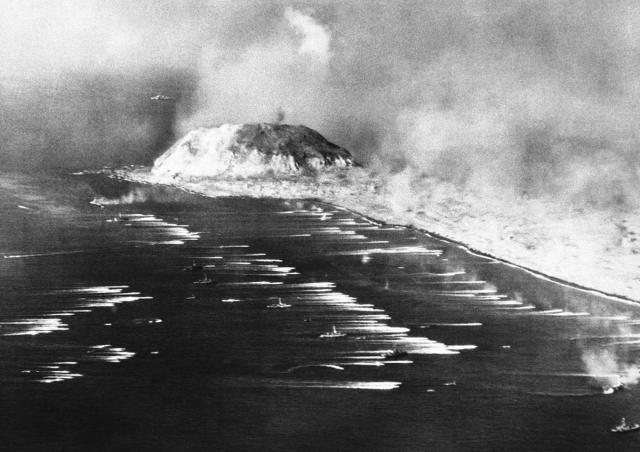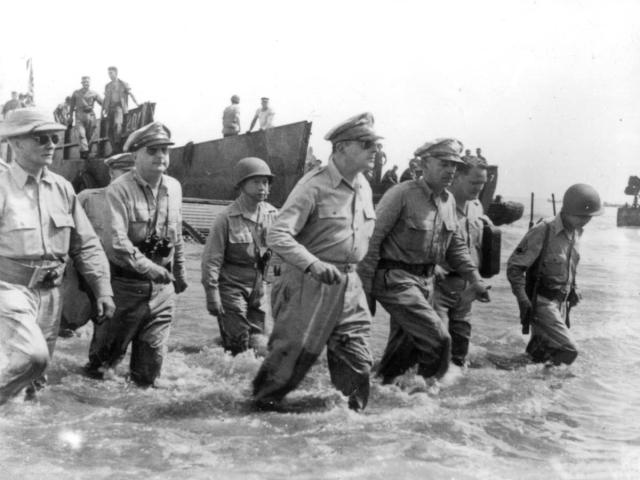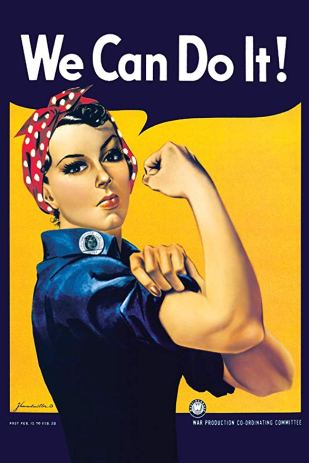Being deeply loved by someone gives you strength.
While loving someone deeply gives you courage.
Lao Tzu
Editor’s Note: Above is a quote Eshrink found while doing research for this series of blog posts: The Way It Was (a glimpse into how he saw life growing up during The Depression and WWII). He said it might be his all time favorite quote so I decided to put it at the top of each post in this series as a reminder of the power of words and the power of love. Eshrink’s writing illustrates the power of both! In case you missed earlier posts in this series, I’ve provided links below.
- The Way It Was: Part 1
- The Way It Was: Part 2
- The Way It Was: Part 3
- The Way It Was: Part 4
- The Way It Was: Part 5
- The Way It Was: Part 6
- The Way It Was: Part 7
Welcome to Part 8 of The Way It Was from Eshrink. In Part 7, Eshrink covered Pearl Harbor “A day that will live in infamy” and the beginning of America’s involvement in World War II (the war to end all wars). We left off with the Allies struggling as Hitler dominated Europe.
The turning point of the war began with the invasion of the German-held countries. The date of the attack continues to be referred to as D-Day. In spite of massive casualties on both sides, there was a new-found sense of optimism that we were no longer on the defensive (and that the paper hanger with the Charlie Chaplin mustache would soon get his!). Editor’s Note: This is referring to Hitler. When I searched, I found this book online about underground humor in Nazi Germany…back to Eshrink.
I must be a latter-day Rip Van Winkle for it is impossible that 75 years have passed since that fateful day when we were all transfixed in front of the radio hoping for good news, convinced rightfully so, that the fate of the world was at stake. There were massive casualties on both sides, but landings were eventually successful. One of Barb’s favorite uncles later reported to her that he carried a photo of her in his wallet as a good luck charm as he landed on Normandy beach. It must have worked for he survived.
The War in the Pacific
Meanwhile, the war in the pacific had turned around following the naval victory at Midway, but the heavily fortified islands of the pacific were being stubbornly defended by Japanese troops who were products of a society in which surrender was dishonorable, and death was preferred. In desperation, their leaders had ordered suicide attacks on our ships, and there was a lot written about these Kamikaze attacks as planes loaded with bombs deliberately crashed onto the decks. Each island was taken with heavy casualties in an inhospitable climate. Eventually, MacArthur was able to fulfill his promise, “I shall return,” with carefully staged filming following the retaking of the Philippines.

 We heard much about unfamiliar places like Guam, Iwo Jima, and Okinawa. The fighting was fierce, often hand to hand. In Okinawa, for example, 12,500 Americans were killed, an estimated 100,000 Japanese and at least that many civilians. There must have been more newsmen imbedded in the Pacific as I recall viewing more footage in the Movietone newsreels shown in local theaters (click here to watch the video recording). There seemed to be more disturbing footage of the Pacific Theater than the European. One that has stuck with me all these years was of a soldier using a flamethrower at the mouth of a cave and the subsequent scene of a Japanese soldier running out totally enveloped in flames. On the other hand, we cheered wildly at the footage of the now famous flag raising on Mt. Suribachi on Iwo Jima. Editor’s Note: Iwo Jima was the deadliest battle in Marine Corps history with 7,000 soldiers killed during the 36-day battle.
We heard much about unfamiliar places like Guam, Iwo Jima, and Okinawa. The fighting was fierce, often hand to hand. In Okinawa, for example, 12,500 Americans were killed, an estimated 100,000 Japanese and at least that many civilians. There must have been more newsmen imbedded in the Pacific as I recall viewing more footage in the Movietone newsreels shown in local theaters (click here to watch the video recording). There seemed to be more disturbing footage of the Pacific Theater than the European. One that has stuck with me all these years was of a soldier using a flamethrower at the mouth of a cave and the subsequent scene of a Japanese soldier running out totally enveloped in flames. On the other hand, we cheered wildly at the footage of the now famous flag raising on Mt. Suribachi on Iwo Jima. Editor’s Note: Iwo Jima was the deadliest battle in Marine Corps history with 7,000 soldiers killed during the 36-day battle.

Caption: Marines go ashore at Iwo Jima, Japan, in February 1945.

Caption: General McArthur in the Philippines circa 1944.
A Country Simultaneous United and Divided
As our troops in Europe advanced to reach the prison camps where an estimated 6,000,000, or perhaps more, Jews were killed, we saw more pictures of the horrific condition of the starving prisoners and of the open mass graves of thousands. Perhaps this opened our eyes to the dangers of racial prejudice. At that time, Jews were still not treated well in our town, for example they were excluded from membership in the local country club. There was also the instance in which a shipload of Jews who had escaped from Germany were refused entrance into the U. S. and were forced to return to Germany. There seems to be no information as to their fate. I also recalled all those conversations about the “New York Jews” and was struck by the fact that we were fighting to liberate people whom it seemed we did not like.
Although the country was perhaps more united than it had ever been politically, we were still divided along racial and country of origin lines. There were usually a few black kids in the schools that I attended, but my interaction was limited, not by any conscious effort on my part. I naively thought that they just enjoyed being with their own. We were not openly segregated as in the deep South, but everyone “knew their place” so to speak. The fact that there was a separate public swimming pool for “negroes” or that they did not eat in restaurants, that they always sat in the balcony at the movies, or that there was only one night of the week when the skating rink was open to them “was just the way things were,” and I didn’t think much about it.
Segregation in the Military
As for the military, things were not much different than they had been during the Civil War. Black troops lived in separate quarters and were organized into different companies which were of course led by white officers, except for those who were assigned duty as stewards or mess hall workers. There were some exceptions and when given the chance, they proceeded to disprove the notion that they were lazy, stupid, and cowardly.
Two of the 150 students in my medical school class were black, one of which was Bob Garrison, a very quiet unassuming guy who seemed a bit older than most of us. A few months ago, I learned that Bob had died after a long career as a family physician. I managed to secure an obituary and found to my surprise that Bob had been one of the Tuskegee airmen who had distinguished themselves in combat. It was not until 1948 that Truman would desegregate the services. Bob had followed the tradition of WWII vets and had not told anyone in our class about his service.
Some time in the 50s, I happened to be reading an article in an old Reader’s Digest written by the first black guy to be commissioned as an officer in the Navy. The story was about his rise to this unheard-of position, and the problems he encountered. There were some enlisted men who could not salute a black person no matter his position. His problems mounted when he was assigned to sea duty, which meant living in close quarters with a bunch of white guys. He reported that there was one fellow officer on board who was supportive, and helped him survive the bigotry. The surprise for me was that the person he named was my second cousin whom I hadn’t seen in years. It was a nice feeling to know I was related to this person who did the right thing, a sense of pride somehow, even though I hardly knew him.
Women and The War Effort
 There is little doubt in my mind that the war was an additional impetus for opening up opportunities for women. After all, it had been barely 20 years since women were granted the right to vote. Although they continued to be treated unfairly in many ways, they were at least given the opportunity to demonstrate their ability to do “man’s work.” It was inevitable that with the incredible expansion of manufacturing for the war effort coupled with the problem of 16 million men serving in the armed forces, there would be a shortage of manpower. One answer to the problem lay in the attempt to recruit women to leave the kitchen and go to work to support the war effort. There were posters glorifying “Rosie the Riveter” showing an attractive young woman working on an airplane assembly line. As I mentioned previously, my mother was a Rosie who seemed happy to return to her kitchen after the war.
There is little doubt in my mind that the war was an additional impetus for opening up opportunities for women. After all, it had been barely 20 years since women were granted the right to vote. Although they continued to be treated unfairly in many ways, they were at least given the opportunity to demonstrate their ability to do “man’s work.” It was inevitable that with the incredible expansion of manufacturing for the war effort coupled with the problem of 16 million men serving in the armed forces, there would be a shortage of manpower. One answer to the problem lay in the attempt to recruit women to leave the kitchen and go to work to support the war effort. There were posters glorifying “Rosie the Riveter” showing an attractive young woman working on an airplane assembly line. As I mentioned previously, my mother was a Rosie who seemed happy to return to her kitchen after the war.
In previous wars, the only women directly involved were nurses, but this time a movement was begun to create a women’s branch of the army. With a great deal of hesitation, the Woman’s Army Corps (WACs) was established soon to be followed by the Navy’s version called Waves. They were to fill non-combatant roles designed to free up more male soldiers for combat. The Air Force version of these “helpers” was never inducted into the Air Force and remained civil service employees. They were to be involved in non-combat missions but nevertheless suffered some casualties. Although they were never to be involved in combat, some missions, delivering airplanes to a war zone for example, often put them at risk.
As I reflect on the pre-war days, it seems to me that the greatest change from the war was with women. Those changes were monumental for them and catastrophic for us guys. The oft asked question of who wears the pants in the family took on new meaning since women were now routinely wearing pants, which among some groups had previously been considered sinful. The war finished off those Victorian values that had survived the Roaring 20s. Although detailed discussions remained off limits, a person could now use the word sex the in polite company without being thought “dirty.” Women openly smoked cigarettes, which had always been the province of men, and no longer made any attempt to hide their pregnancies. The “sugar and spice and everything nice” characterization of females no longer seemed appropriate. Although the “battle of the sexes” was still in full swing, the stage was being set for the unconditional surrender of our masculinity and admission of defeat. The evidence is everywhere. For example, when I went to medical school in the 1950s there were three women in a class of 150 (Class of 1957), while in this year’s class women outnumbered men. Then, there is that spectacle of all those women in positions of power at the State of the Union address. Its enough to make a macho guy like me tremble.
There had been certain positions felt appropriate for women such as secretarial work, domestic help, switchboard operators, and cleaning. School teachers, especially those in the lower grades, were almost all women. They were usually unmarried, chaste, and expected to remain so. The nursing profession had a long-held tradition as exclusively female. Additionally, their long-held position in society as nurturers was felt to make them well-suited for the job. Some cynics insist that it is more likely due to men’s aversion to emptying bed pans.
American Industry and The War Effort
Meanwhile, this newfound talent participated in what at the time seemed miraculous. Indeed, some historians have suggested that the war was actually won by the massive mobilization of American industry. Planes that previously took weeks or even months to build, were now turned out in days. We heard much about liberty ships designed to carry all the desperately needed instruments of war to Europe. In just a couple of years, 2,710 such ships were built, and they were sitting ducks for the German U-boats. I remember hearing much about their dangerous voyages, but it was not until writing these memoirs that I learned more than half of them (1554) were sunk. It was said that we just decided to build more ships than the Germans could sink. A new shipyard was built in 150 days and the record time to build a ship was an unbelievable 4 days 15 hours and 25 minutes. Yankee ingenuity had used Henry Ford’s assembly line procedures and huge sections of the ship were produced in factories all over the country, and sent by railroad flatcar to the shipyard where the sections were put together and the ship was sent on its way.
Editor’s Note: Thanks for reading “The Way It Was: Part 8” I hope you will tune in for the final installment next week.

very interesting
LikeLike